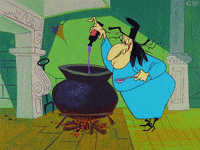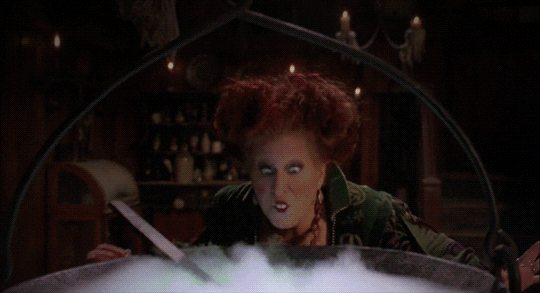Table of Contents
Witches Brew Chicken Soup Recipe

Try this Witches Brew Chicken Soup Recipe! This tasty witch’s concoction is perfect for the month of Halloween and Holiday. With the winds increasing and the leaves starting to fall, the increase of rain – and pumpkins showing up everywhere. A Chicken soup recipe is also great medicine for the body and will keep colds and flus at bay. Happy Halloween!

Witches Brew Chicken Soup Recipe: Ingredients
- 1 tablespoon of butter or margarine
- 4 skinned and boned chicken breast halves
- 1 large onion chopped
- 3 carrots chopped
- 2 garlic cloves, minced
- 4 cups of vegetable broth
- 1 tablespoon chicken bullion granules
- 1 teaspoon of ground cumin
- ¼ teaspoon ground red pepper
- 3 (16 ounce) cans of great northern beans, rinsed, and drained
- 1 (4.5 ounce) can chopped green chiles
- 2 tablespoons of all- purpose flour
- ½ cup of milk
- ¼ cup of chopped fresh cilantro
- Optional toppings (cheddar cheese, sour cream)

Witches Brew Chicken Soup Recipe: Directions
- Melt butter in a large Dutch oven over medium- high heat. Add chicken and next 3 ingredients, and sauté 10 minutes. Stir in the broth with next 3 ingredients.
- Bring to a boil: reduce heat, and simmer, stirring occasionally. 20 minutes. Stir in 2 cans of beans and chiles.
- Mash the remaining can of beans in a small bowl. Whisk together flour and milk, an stir into beans. Gradually, add bean mixture to the soup mixture, stirring constantly. Cook 10 minutes or until thickened. Remove from heat, and stir in cilantro. Serve with desired toppings.

Short History of Witches
With her black cloak and peaked hat, her broomstick and cat, the witch is a figure of Halloween, and the one with the strangest history. Her name comes from the Saxon word wica, meaning wise one.
Witchcraft began with magic and was actually step toward greater knowledge. Early magicians were something like scientists, trying to understand the forces of nature and so control them.
Cave paintings made by magicians, or sorcerers, of Europe twenty thousand years ago may still be seen today. Most are pictures of reindeer, mammoths, or other large animals lying trapped or pierced with spears.
The sorcerers believed that by painting a picture of something happening, they could make it happen. This is known as imitative magic.
To cast a spell on an enemy, the sorcerer would steal a piece of the person’s clothing, a lock of hair, or a bit of fingernail. When the enemy found out, he would be sick with fear and might even die. This was contagious magic.
Sometimes, to bewitch or kill, the sorcerer used sympathetic magic, burning or sticking pins into a tiny model of the person.
Sorcerers also had a knowledge of plant and animal products that seemed magical. They were experts at mixing medicines as well as poisons.
The sorcerer’s knowledge of magic and medicine gave him a special power over the people around him. In order to retain this power, he kept his magic occult, or hidden.
When people began to farm, rain and sunshine became more important to them. Now they looked to the sorcerers to end dry spells and periods of cloudiness or of too much rain. But, as often as not, the sorcerer’s magic failed.
Helpless before the forces of nature, people made them into gods. A human being could appeal to the nature gods, honor, flatter, or even threaten them, but never control them. Whatever happened was the will of the gods, to interpret it, priests came into being.
Magicians and witches dropped into the background. Living at the fringes of ancient societies, they told fortunes, prepared charms and brewed herb mixtures for various ailments. In Rome and Greece they were considered harmless until AD 14, when Emperor Augustus Caesar banned them for fear their predictions might aid his rivals. In Israel, witches and magicians were banished, but some lived on there, undercover.
According to the Bible, King Saul himself secretly visited the Witch of Endor when he was worried about a coming battle. The witch called up Samuel from the dead to ask about Saul’s future.
Angry at being summoned by a forbidden art, Samuel predicted that Saul would lose the battle and lose his life. And so he did.
By the time Christianity became the official Roman religion, using magic to blight a crop, raise a storm, or predict the death of an emperor was a serious crime. However, harmless magic-healing the sick or preparing love potions-was accepted.
Most magicians and witches were pagans. So, as the Christian church grew, they passed from favor, less for their magic than for their religious beliefs.
Many people, though, especially those in remote places in Europe, still held fast to their old beliefs-including their belief in magic, witches, and witchcraft.
For More on the History of Witchcraft, Follow This Link
For More on Halloween, Follow This Link…
The All Halloween Website – (celebratehalloween.net)


Leave a Reply
You must be logged in to post a comment.